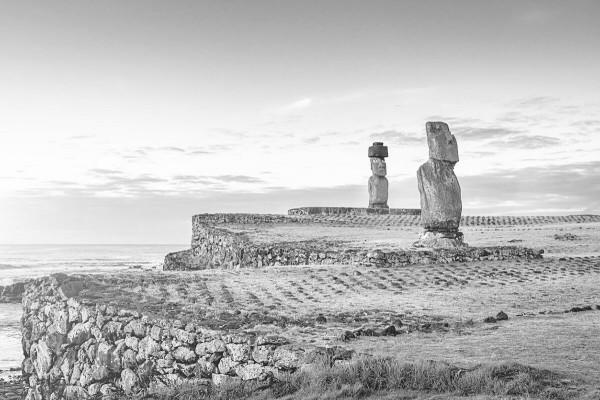The Depopulation of Easter Island.
The remote Rapa Nui (Easter Island) lies 2,300 miles west of Chile. No written historical records exist concerning the island; however, it's commonly agreed that seafaring Polynesians settled there sometime between 800 and 1200 CE. The island is famous for a collection of around 900 moai statues — stone-carved figures that stand in rows on cliffs, hillsides, and shorelines, most of them with their backs to the sea. The average moai is 13 feet tall and weighs 14 tons; the tallest is a whopping 72 feet high. Archaeologists believe that the colossal statues portray gods and tribal leaders, and it’s thought that ropes and trees were used to move and position the statues upright.
While the moai have long intrigued researchers, the rapid demise and depopulation of Easter Island has puzzled them. When Dutch explorer Jacob Roggeveen arrived here in 1722, he encountered 3,000 or more islanders living in a flourishing and developed society. In 1774, Captain James Cook visited the island and reported around 700 islanders. By 1877, only 111 inhabitants remained. Deforestation, cannibalism, the introduction of the Polynesian rat, warfare, and the slave trade are all possible theories for the dramatic change in fortune; however, anthropological, archaeological, and historical research has yet to uncover the truth.



